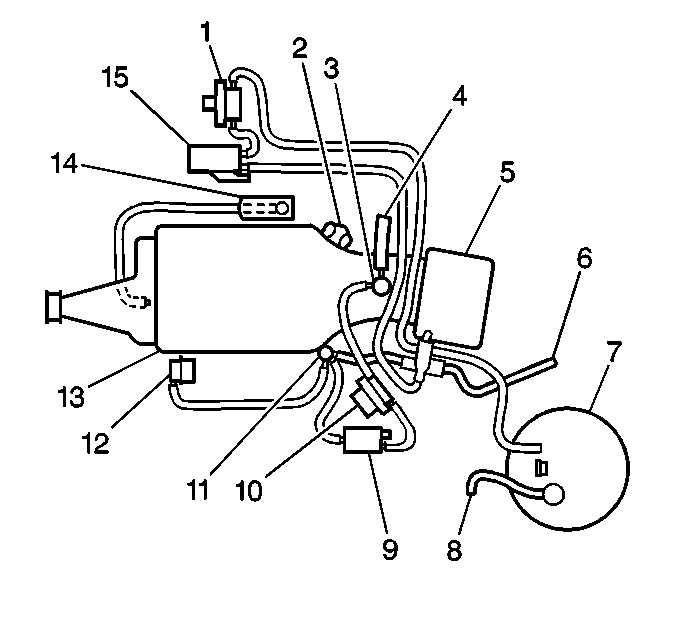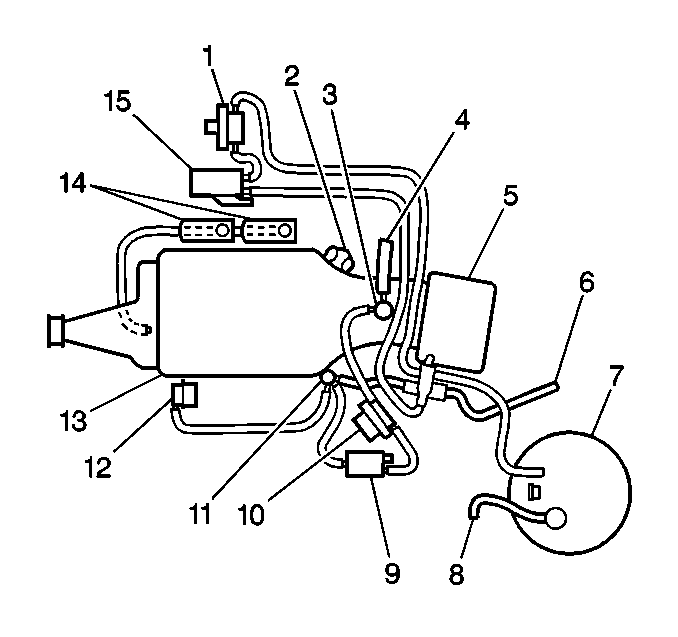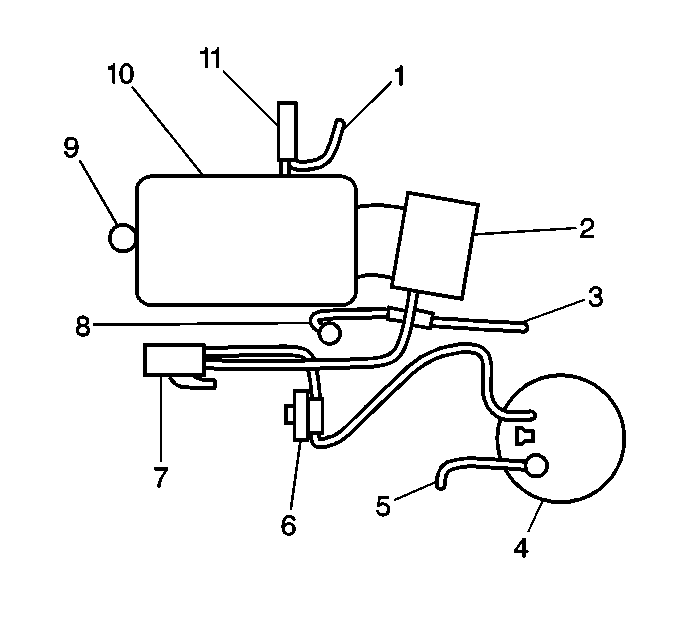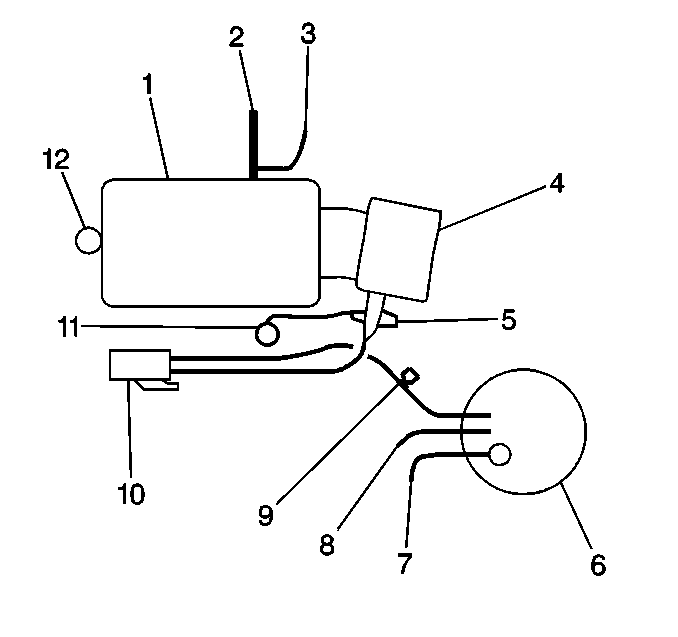Hesitation, Sag, Stumble Symptom
Step
| Action
| Value(s)
| Yes
| No
|
DEFINITION: Momentary lack of response as the accelerator
is pushed down. Can occur at any vehicle speed. Usually most pronounced when
first trying to make the vehicle move, as from a stop sign. May cause the
engine to stall if severe enough.
|
1
| Was the Powertrain
On-Board Diagnostic (OBD) System Check performed?
| --
|
Go to Step 2
| Go to the
Powertrain On Board Diagnostic (OBD) System Check
|
2
|
- Perform a bulletin search.
- If a bulletin that addresses the symptom is found, correct the
condition as instructed in the bulletin.
Was a bulletin found that addresses the symptom?
| --
|
Go to Step 21
|
Go to Step 3
|
3
| Was visual/physical check performed?
| --
|
Go to Step 4
| Go to Visual/Physical Checks
|
4
|
- Start the engine.
- Observe the HO2S 1 voltage display on the scan tool while modulating
the throttle.
- If the HO2S 1 voltage does not respond quickly to changes in throttle
position, check for a contaminated HO2S. Refer to
Notice: Contamination of the oxygen sensor can result from the use of an inappropriate
RTV sealant (not oxygen sensor safe) or excessive engine coolant or oil consumption.
Remove the HO2S and visually inspect the portion of the sensor exposed to
the exhaust stream in order to check for contamination. If contaminated, the
portion of the sensor exposed to the exhaust stream will have a white powdery
coating. Silicon contamination causes a high but false HO2S signal voltage
(rich exhaust indication). The control module will then reduce the amount
of fuel delivered to the engine, causing a severe driveability problem. Eliminate
the source of contamination before replacing the oxygen sensor.
.
Was a problem found?
| --
|
Go to Step 21
|
Go to Step 5
|
5
|
- Check fuel pressure. Refer to
Fuel System Pressure Test
.
- If a problem is found, repair as necessary.
Was a problem found?
| --
|
Go to Step 21
|
Go to Step 6
|
6
|
- Turn ON the ignition switch, engine not running.
- Observe TP angle display on the scan tool while slowly increasing
throttle pedal.
Does the TP angle display steadily increase from 0% at closed throttle
to 100% at WOT?
| --
|
Go to Step 7
|
Go to Step 20
|
7
| Monitor Long Term Fuel Trim on the scan tool.
Is Long Term Fuel Trim significantly in the negative range (Rich condition)?
| --
|
Go to Step 8
|
Go to Step 9
|
8
|
- Check items that can cause the engine to run rich. Refer to Diagnostic
Aids.
- If a problem is found, repair as necessary.
Was a problem found?
| --
|
Go to Step 21
| --
|
9
|
- Check items that can cause the engine to run lean. Refer to Diagnostic
Aids.
- If a problem is found, repair as necessary.
Was a problem found?
| --
|
Go to Step 21
|
Go to Step 10
|
10
|
- Check for proper ignition coil output voltage with a J 26792
spark tester:
| • | Clip the spark tester to engine ground. |
| • | Connect one end of a spark plug wire to the spark tester; connect
the other end of the spark plug wire to the coil being tested. |
| • | Connect one end of another spark plug wire to the other coil tower;
connect the other end of the spark plug wire to ground. |
| • | Crank the engine while observing the spark tester; a crisp blue
spark should be observed. |
| • | Repeat the above steps for each coil. |
- If adequate spark is not present at all coils, repair as necessary.
Was a problem found?
| --
|
Go to Step 21
|
Go to Step 11
|
11
|
- Check for loose ignition control module ground. Refer to Ground
Distribution in Electrical Diagnosis.
- If a problem is found, repair as necessary.
Was a problem found?
| --
|
Go to Step 21
|
Go to Step 12
|
12
|
Important: Spraying the secondary ignition wires with a light mist of water may
help locate an intermittent problem Ignition components will arc to ground
when a secondary component is malfunctioning.
- Visually/Physically inspect the secondary ignition wires. Refer to
Ignition System in Engine Electrical to check for the following conditions:
| • | Check all ignition wire resistances; should be less than the specified
value. |
| • | Ignition wires for cross firing. |
| • | Ignition wires arcing to ground. |
| • | Ignition wires for improper routing. |
- If a problem is found, repair as necessary.
Was a problem found?
| 30K ohms (30,000 ohms)
|
Go to Step 21
|
Go to Step 13
|
13
|
- Inspect the ignition coils for cracks or carbon tracking.
- If a problem is found, replace affected coil(s) as necessary.
Refer to
Ignition Control Module Replacement
.
Was a problem found?
| --
|
Go to Step 21
|
Go to Step 14
|
14
|
- Check ignition coil secondary resistance.
- Replace any coil(s) which are not within the specified values.
Refer to
Ignition Control Module Replacement
.
Was a problem found?
| 5K-8K ohms
(5000-8000 ohms)
|
Go to Step 21
|
Go to Step 15
|
15
|
Notice: Determine the cause of the oil or gas fouled spark plugs in order to
avoid damage to the new spark plugs.
- Remove spark plugs and check for wet plugs, cracks, wear, improper gap,
burned electrodes, or heavy deposits.
- If a problem is found, repair as necessary.
Was a problem found?
| --
|
Go to Step 21
|
Go to Step 16
|
16
|
- Check PCM grounds for being clean, tight and in the proper locations.
Refer to Ground Distribution in Electrical Diagnosis.
- If a problem is found, repair as necessary.
Was a problem found?
| --
|
Go to Step 21
|
Go to Step 17
|
17
|
- Check MAF sensor connections.
- If a problem is found, replace terminals as necessary. Refer to Wiring Repair
in Electrical Diagnosis.
Was a problem found?
| --
|
Go to Step 21
|
Go to Step 18
|
18
|
- Visually/physically check vacuum hoses for splits, kinks, and
proper connections and routing as shown on the Vehicle Emission Control Information
label.
| • | All with VIN 1 (RPO L67) except Bonneville - Refer to
C/H-Car with VIN 1

|
| • | Bonneville with VIN 1 (RPO L67) - Refer to
Pontiac H-Car with VIN 1

|
| • | C-Car with VIN K (RPO L36) - Refer to
C-Car with VIN K

|
| • | H-Car with VIN K (RPO L36) - Refer to
H-Car with VIN K

|
- If a problem is found, repair as necessary.
Was a problem found?
| --
|
Go to Step 21
|
Go to Step 19
|
19
|
- Review all diagnostic procedures within this table.
- If all procedures have been completed and no malfunctions have
been found, review/inspect the following:
| • | Visual/physical inspection. Refer to Visual/Physical
Checks
. |
| • | Freeze Frame data/Failure Records data. |
| • | All electrical connections within a suspected circuit and/or system. |
- If a problem is found, repair as necessary.
Was a problem found?
| --
|
Go to Step 21
| Review technical bulletins
|
20
| Replace the TP sensor.
Is action complete?
| --
|
Go to Step 21
| --
|
21
| Operate the vehicle to duplicate conditions present when the original
symptom was noted.
Is symptom still present?
| --
|
Go to Step 3
| System OK
|




